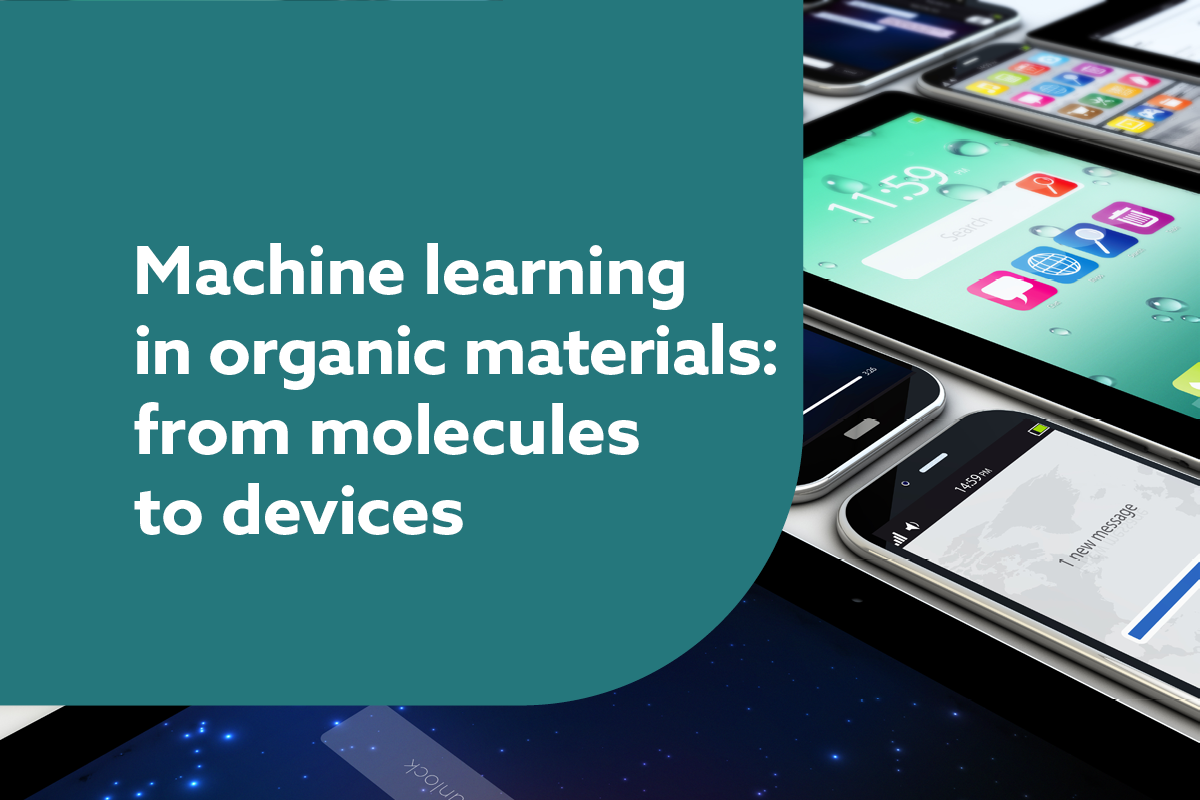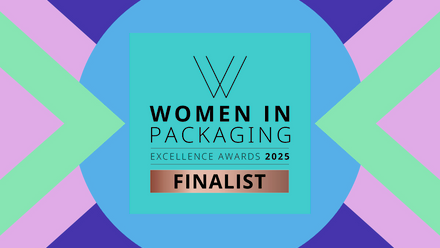Machine Learning in Organic Materials: From Molecules to Devices
View on-demand
Please login or create your My IOM3 Account to access this on-demand webinar

Machine learning within the polymer field is becoming of increased interest for materials discovery and cost-effective fabrication. This webinar is focused on the use of machine learning in the area of polymer science and technology, featuring presentations from academics and industry professionals.
Who should attend?
This webinar will be of interest to individuals working in polymer science and technology, either in academia or in industry
What will I learn?
By attending this webinar, delegates will gain:
- Fundamental knowledge on the use of machine learning in the discovery and design of polymers;
- Understanding digitalization in a polymer industry;
- Knowledge about the development of machine learning within the polymer field in the UK.
You'll hear from
Computational discovery of molecular materials
Presented by Dr. Kim Jelfs
We have been developing computational software towards assisting in the discovery of molecular materials with targeted structures and properties. Whilst initially we have focused upon porous molecular materials, we will also address the ways in which our approach is generalisable to other molecular materials and their applications, including as organic semiconductors or for photocatalysis. Intrinsically porous organic molecules have shown promise in separations, catalysis, encapsulation, sensing, and as porous liquids. These molecules are typically synthesised from organic precursors through dynamic covalent chemistry (DCC).
If we consider cages synthesised from imine condensation reactions alone, there are approximately 800,000 possible aldehyde and amine precursors, combining these in all the different possible topologies results in over 830 million possible porous organic cages. Therefore, either from a computational or synthetic perspective, it is not possible for us to screen all these possible assemblies. Our evolutionary algorithm automates the assembly of hypothetical molecules from a library of precursors. The software belongs to the class of approaches inspired by Darwin's theory of evolution and the premise of "survival of the fittest". Our approach has already suggested promising targets that have been synthetically realised.
Further, we are addressing questions such as which topologies or DCC reactions maximise void size or whether specific chemical functionalities promote targeted applications. We have also examined the application of machine learning for the rapid prediction of whether porous organic molecules will be shape persistent, retaining an internal cavity, or not, and recurrent neural networks to generate new molecules with target optoelectronic properties.
A parametric study of adhesive bonded joints with composite material using black-box and grey-box machine learning methods: Deep neuron networks and genetic programming
Presented by Mr. Gu Zewen | PhD Student, Lancaster University.
Nowadays, the wide applications of adhesives joining has been stimulated due to their excellent performances over conventional joining methods. However, conventional numerical and experimental methods still rely on ‘’one-factor-at-a-time’’ technique for analysing adhesive joints, which neglects the complicated, while essential, mutual effects of design variables of adhesive joints. Therefore, this study employed black-box (Deep Neuron Networks) and grey-box (Genetic Programming) machine learning methods to investigate the mutual effects of continuous (geometry) and discrete (materials) design parameters of composites adhesive joints. The aim is to conduct a systematic and comparative study for involving all possible design variables in evaluating the mechanical properties of composites adhesive joints. Coupling with Latin Hypercube sampling technique, a FE model of adhesive joints validated by experimental results is used to generate input data for both developed machine learning models. Case studies based various geometric properties and different joining materials are analysed, and a systematically comparative study is conducted to show the different features of the two machine learning models. In the end, the best combinations of the continuous and discrete parameters for the case studies are found by applying the proposed method. The present method also shows the potential to extensively used in other applications where complicated multiple variables involve.
The Value of AI-Generated Capability Mapping in Materials and Chemicals
Presented by Hannah Melia | Citrine Informatics
This presentation will describe capability maps, what they are and how they are generated, before delving in to the different ways they can be used. Capability maps visualize the achievability of different property combinations by one or more material candidates in a design space.
By comparing them:
- Research leaders can use them to make data-driven decisions about their next research direction.
- Application engineers in material producing companies can use them to scaffold sophisticated property / cost trade-off discussions with end customers.
- Product developers at companies with long-term plans, can understand how far the properties of a component’s material can be pushed using current technology.
- Sustainability-focused companies can find out whether removing ingredients that are likely to be regulated in the future and replacing them with other ingredients will impact the properties they can achieve.
AI for Materials is not just about predicting properties. It provides value to decision makers and captures knowledge in a way that can be leveraged on future projects. This talk hopes to highlight one aspect of that.
Enhancing the stability of organic photovoltaics through machine learning
Presented by Tudur Wyn David, Bangor University
In recent years, machine learning (ML) has become a powerful technique for extracting meaningful information from both literature and experimental results. By utilising ML for prediction tasks, the research process can be dramatically enhanced by reducing demand on time – exhaustive experimentation. In addition, by analysing the model results of an ML analysis, greater insight can be achieved into the underlying features which govern a particular property. Two ML approaches will be considered: 1) an analysis of a database consisting of organic photovoltaic (OPV) material, stability and performance data and 2) an analysis of a dataset of outdoor tested OPV modules to perform forecasting of OPV stability and performance based on climatic conditions.
The analysis of the OPV material database is achieved using the materials, configuration and testing conditions as predictive attributes, and the power conversion efficiency (PCE) and time to reach 80% of the initial efficiency (T80) as the response for prediction. A sequential minimal optimisation regression (SMOreg) ML algorithm is used to perform the prediction. This subsequently allows the most significant materials and configurations to be determined for enhancing both the stability and performance of OPV devices. The analysis is additionally considered in terms of devices tested under ISOS – L and ISOS – D standards such that the materials governing both light stability and dark storage stability can be determined.















